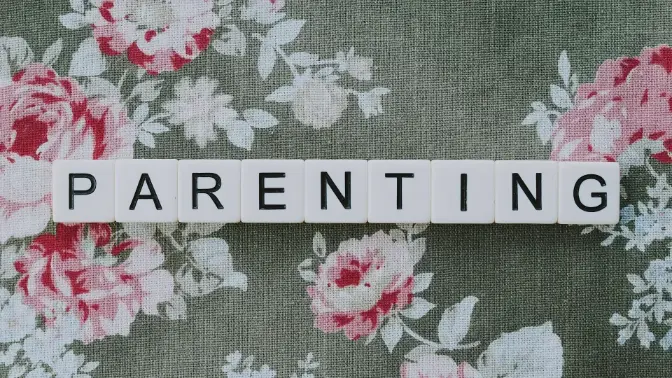Understanding the Philosophy of Letting Go
Letting go is a multifaceted concept rooted in various philosophical traditions. One of the most prominent sources of insight comes from Buddhism, where the idea of attachment is seen as a pivotal source of suffering. According to Buddhist teachings, clinging to material possessions, relationships, or even expectations can lead to an ongoing cycle of dissatisfaction. The Buddha famously stated that “Attachment leads to suffering,” emphasizing that recognizing and ultimately releasing these attachments can pave the way to enlightenment and inner peace.
In contrast, Stoicism presents another angle on emotional detachment. Stoic philosophers such as Epictetus and Marcus Aurelius taught that our responses to external events are within our control, regardless of our emotional attachments. By focusing on what we can control and letting go of the rest, we can cultivate resilience and tranquility. The Stoic concept of “amor fati,” or love of fate, encourages individuals to embrace their circumstances, learning to release the emotional burdens tied to what is beyond their influence.
Modern psychology also contributes to our understanding of letting go, particularly through therapeutic approaches such as Acceptance and Commitment Therapy (ACT). This modality emphasizes the importance of acknowledging one’s thoughts and feelings without letting them dictate one’s actions. The idea is to accept difficult emotions as part of the human experience while fostering a mindset of willingness to let these feelings pass. Clinical psychologists assert that by recognizing emotional attachments—and understanding their potential to cause distress—we can work towards healthier emotional states. Quotes from various philosophers and psychologists serve to reinforce the liberating essence of letting go. For instance, the renowned psychologist Carl Jung remarked, “I carry my own ashes with me,” highlighting the importance of confronting and processing our past instead of holding onto it. This holistic view across traditions indicates that engaging with the philosophy of letting go is a crucial step in alleviating emotional suffering.
Experience the miracle of mindfulness with this classic guide to meditation from Buddhist monk Thich Nhat Hanh
In this beautifully written book, Buddhist monk and Nobel Peace Prize nominee Thich Nhat Hanh explains how to acquire the skills of mindfulness. Once we have these skills, we can slow our lives down and discover how to live in the moment – even simple acts like washing the dishes or drinking a cup of tea may be transformed into acts of meditation.
Thich Nhat Hanh’s gentle anecdotes and practical exercises help us to arrive at greater self-understanding and peacefulness, whether we are beginners or advanced students. Irrespective of our particular religious beliefs, we can begin to reap the immense benefits that meditation has been scientifically proven to offer. We can all learn how to be mindful and experience the miracle of mindfulness for ourselves.
Examples of Individuals Who Have Embraced Letting Go
Numerous individuals have publicly shared their journeys of personal growth through the practice of letting go. One compelling example is the celebrated author and speaker Brené Brown. Renowned for her insights into vulnerability and shame, Brown has openly discussed her experiences with emotional attachment and the profound transformation that occurred when she chose to release these burdens. By letting go of her fears surrounding neglect and failure, she was able to embrace authenticity, leading to a deeper connection with herself and others.
Another notable example is actor Jim Carrey, who has spoken extensively about the power of letting go in his own life. Carrey faced personal and professional challenges, including the loss of his father and struggles with mental health. By practicing the principle of letting go, he found the emotional resilience needed to move forward. He famously stated that “you can fail at what you don’t want, so you might as well take a chance on doing what you love.” This reflects his understanding that emotional attachments to fear can hinder one’s true potential.
In the realm of everyday individuals, there is the inspiring story of a woman named Laura, who underwent a transformative experience after a difficult divorce. Initially held captive by anger and resentment, she discovered the philosophy of letting go and gradually released her emotional attachments to the past. Through counseling and personal reflection, Laura learned to forgive herself and her ex-partner. This process not only gave her emotional freedom but also led to a rejuvenated sense of self-worth and ultimately a more fulfilling life.
These stories exemplify how various individuals, through the courageous act of letting go, have cultivated emotional resilience and improved life satisfaction. The ability to release unhealthy attachments appears to be a transformative force that empowers individuals to reclaim their narratives and thrive.
With poetry and clarity, ThichNhat Hanh imparts comforting wisdom about the nature of suffering and its role in creating compassion, love, and joy – all qualities of enlightenment.
“Thich Nhat Hanh shows us the connection between personal, inner peace, and peace on earth.”-His Holiness the Dalai Lama
In The Heart of the Buddha’s Teaching, now revised with added material and new insights, Nhat Hanh introduces us to the core teachings of Buddhism and shows us that the Buddha’s teachings are accessible and applicable to our daily lives.
Covering such significant teachings as the Four Noble Truths, the Noble Eightfold Path, the Three Doors of Liberation, the Three Dharma Seals, and the Seven Factors of Awakening, The Heart of the Buddha’s Teaching is a radiant beacon on Buddhist thought for the initiated and uninitiated alike.
The Psychological Benefits of Letting Go
Letting go of emotional attachments can yield significant psychological benefits, contributing to improved overall mental health. Research has consistently shown that individuals who practice emotional detachment experience reduced anxiety levels. This reduction can stem from the alleviation of the burden of negative feelings associated with past relationships or events. By allowing oneself to release these emotional weights, individuals move toward a state of clarity, enabling them to address the present more effectively.
Moreover, fostering the ability to let go enhances emotional well-being. Engaging in practices that promote detachment and acceptance not only aids in processing emotions but also fosters resilience. The practice of mindfulness, for instance, encourages individuals to acknowledge their feelings without becoming overwhelmed by them. Through mindfulness techniques, such as meditation and deep breathing, people can develop a greater awareness of their thoughts and emotions, creating a buffer against anxiety and stress.
Another essential aspect of letting go is the cultivation of emotional intelligence. Learning to understand and manage one’s emotions contributes to healthier relationships and a more profound sense of self-awareness. Individuals become better equipped to navigate interpersonal dynamics when they practice emotional detachment. This detachment does not suggest a lack of care but rather the ability to recognize what can be changed and what must be accepted.
Implementing practical strategies to facilitate letting go can lead to lasting changes in mental health. Journaling, for example, allows individuals to process complex emotions and identify patterns that require release. This practice, combined with setting intentional boundaries in relationships, can enhance emotional freedom. By integrating these methods into daily life, individuals can create a more peaceful existence, ultimately leading to a richer and more fulfilling emotional landscape.
In this little treasure, Thich Nhat Hanh offers a Buddhist view of love along with techniques for manifesting it in our daily lives. In his characteristically direct, simple, and compassionate style, he explores the four key aspects of love as described in the Buddhist tradition- lovingkindness, compassion, joy, and freedom.
In order to love in a real way, Thich Nhat Hanh explains, we need to learn how to be fully present in our lives. In True Love he offers readers the technique of conscious breathing as a method for synchronizing the mind and body to establish the conditions of love. He goes on to offer a mantra practice for generating love that consists of expressing four key statements or intentions in our relationships. These include- “Dear one, I am really there for you”; “Dear one, I know that you are there, and I am really happy about it”; “Dear one, I know that you are suffering, and that is why I am here for you”; and “Dear one, I am suffering, please help me.”
Experiencing Freedom Through Letting Go
The act of letting go can engender a profound sense of freedom, significantly transforming an individual’s emotional landscape. When one chooses to release emotional attachments, whether to past traumas, toxic relationships, or material possessions, they begin to pave the way for new opportunities and healthier dynamics in their lives. This liberation is not merely a process of subtraction; it is also an invitation to rediscover oneself in an expansive and fulfilling manner.
Emotional attachments often bind us, fostering feelings of anxiety and hindering our ability to live authentically. By consciously deciding to let go of these constraints, individuals can open themselves to new experiences that enrich their existence. For instance, releasing the weight of past grievances allows space for forgiveness and understanding, leading to less tension in interpersonal relationships. As we shed what no longer serves us, we invariably gain the capacity to embrace healthier connections, marked by mutual respect and support, which can drastically enhance our quality of life.
Moreover, the journey of letting go often presents us with opportunities for personal growth. As we confront and dismantle our emotional attachments, we become more attuned to our needs and desires. This introspective process fosters self-awareness, guiding us toward choices that align with our values and aspirations. The resulting clarity can empower individuals to chase after goals that previously felt unattainable, facilitating a more purposeful existence.
As you reflect on your life, consider the attachments that may be holding you back. What emotional burdens have you carried for too long? Identifying these patterns is the first step toward emotional and mental freedom. Embrace this transformative journey, as the power of letting go can lead to an enriched and more fulfilling life.






